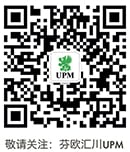1. Promoting circular economy with recyclable and reusable packaging
“From an environmental sustainability perspective, in 2021 there will be a high demand for ethical products and packaging from users,” says Dr Yoon J. Choi, Lecturer for BA Product Design at Central Saint Martins.
Most packaging will be made of recyclable material with an easy navigational system for users to distinguish which are recyclable and which are not. Further, recyclable packing will become more mainstream and not just used by those who demand it. Choi then mentions that more reusable packaging featuring integrated service ideas, such as collection services and reward schemes, will also become available during the year.
With a strong link to existing and emerging sustainability trends, circular design thinking is another top trend to keep an eye on in 2021.
“Circular design will become a stronger trend, both in designing services and the design of packages as functional vehicles carrying out these services. There is a lot of potential here for reusable materials, too,” Markus Joutsela, Director of Pack-Age at Aalto University, outlines.
Choi agrees, adding that as the circular economy becomes a critical framework to be considered during the design process, packaging design should encourage the reuse of a product before it is returned to the manufacturer.
“Behaviour change strategies are the top issue in the sustainable design sector, particularly in packaging. The industry is giving much thought to how design can motivate users to reuse, recycle and return to shops and manufacturers,” the expert elaborates.
2. Branding the online shopping experience
“Rapid growth in e-commerce across product categories is noteworthy, and yet the majority of packaging solutions for e-commerce are still under-developed from the consumer, branding and sustainability point of view,” Joutsela explains.
He believes that after the size, logistic and efficiency optimisation, the next phase in e-commerce packaging will see companies starting to implement marketing strategies through packaging. For example, we can expect to see more branded and experiential e-commerce packaging solutions that help companies extend the brand experience into consumers’ homes through enhanced boxing experiences.
Although e-commerce was already experiencing a meteoric rise before the COVID-19 pandemic, the events of 2020 brought on even more drastic changes in consumer habits. As an example, in just four months e-commerce grew to represent 16.1% of total US retail spending in 2020, compared to 10.7% in 2019.
However, it’s vital that companies understand both the opportunities and the risks presented by e-commerce.
“Managing expectations and matching the brand and product experience from the online environment to the point of opening a delivered product should be a major concern for any respectable company entering the era of e-commerce. Shipping and delivery packaging are also affecting the quality perception and the image of a brand,” Joutsela cautions.
3. Providing a different shopping experience
Technology is also set to play a leading role throughout 2021.
New initiatives such as RecyClass harness the power of information technology to provide enterprises with the digital tools to check the level of recyclability of their packaging, advice on improving a package's design to make it more environmentally friendly and the opportunity to get it certified by an expert.
“Virtual reality will become popular for providing a new shopping experience. Artificial intelligence and the Internet of Things will assume a particularly important role in the packaging industry, which will also help in achieving a sustainable manufacturing process and aiding users' ethical decision-making process,” Choi asserts.
VR and AR can enable customers to visualise a product and the accompanying packing in a 3D format. Packaging solutions “come alive” at a proper scale and, ultimately, in whatever environment the customer chooses.
As consumers become more conscious about what and how they buy, packaging design needs to provide the correct and relevant information to support our green ambitions.
